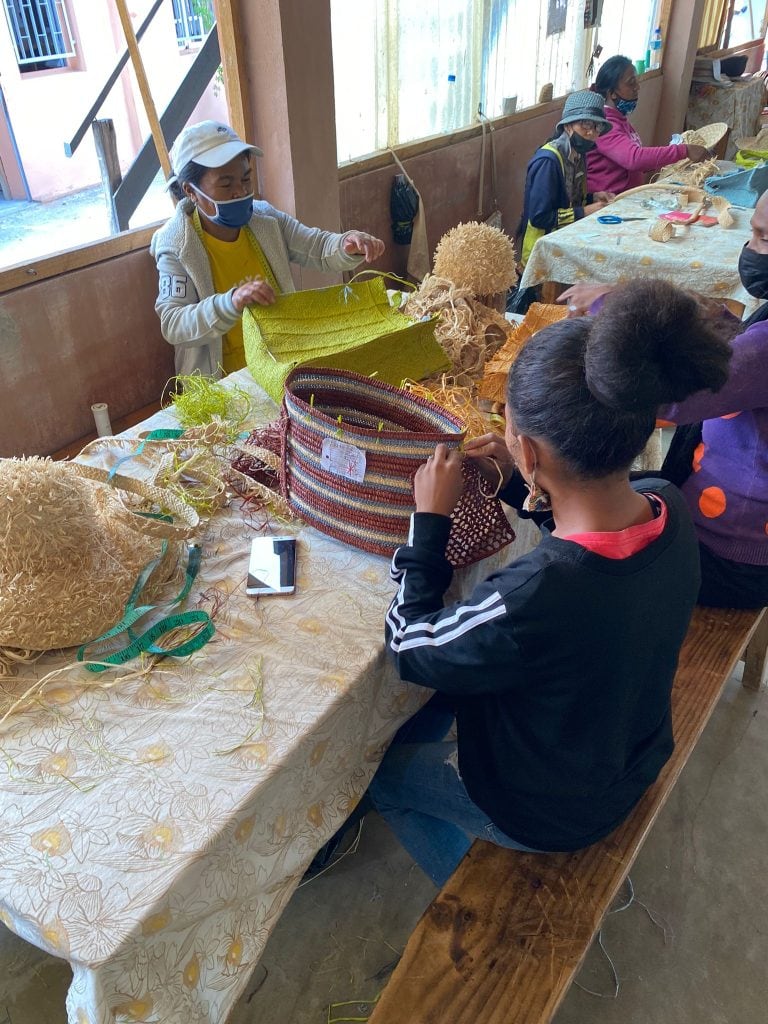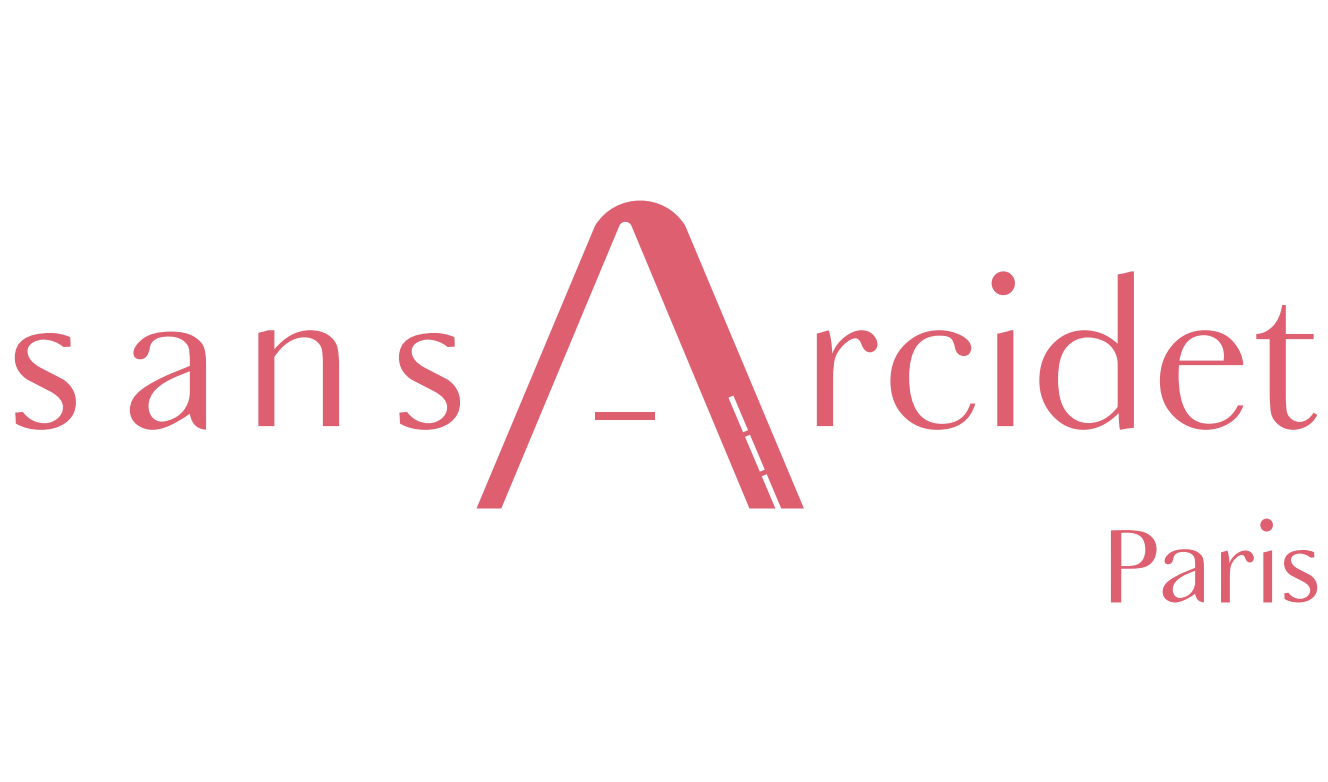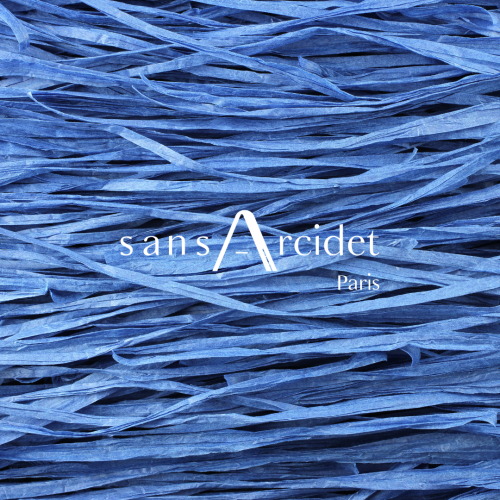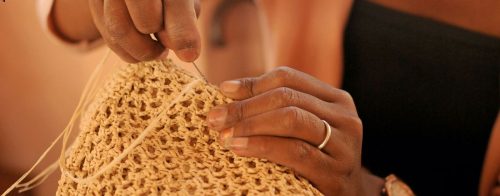Because we want to share our aspirations and commitments with you, check out our five-part series on the secrets of Sans-Arcidet Paris. Thanks to the interview with Corinne the stylist, and her son Samuel Bernede, co-stylist of the brand since 2018, you will know all about raffia, but also about the creative process of Sans-Arcidet!

Raffia is a natural fiber derived from the leaves of the Raphia farinifera palm tree from Madagascar. The palm is collected and the leaves are separated from the main stem and gathered in bundles ready to be dried to obtain our raw material.
Corinne, stylist and co-founder of the Sans-Arcidet Paris.
Can you tell us more about the raffia ?
Raffia is a natural fiber derived from the leaves of the Raphia farinifera palm tree from Madagascar. The palm is collected and the leaves are separated from the main stem and gathered in bundles ready to be dried to obtain our raw material. Contrary to wool whose fibers are transformed into threads and then piled up, raffia fibers have a finished length. In order to obtain a quality product with the least number of joints possible in the mesh, we select the longest possible fibers from our suppliers, on average 1m20 to 1m80 for an adult palm tree.
Why did you choose the raffia ?
Raffia is a natural material that is resistant and strong over time, and it offers a wide variety of processes to create unique accessories, but also sustainable and biodegradable.
The raffia imposed itself to us since we lived in Madagascar when we were young, and we did not wait for the trends to propose accessories resulting from this beautiful Malagasy nature, we work the raffia since 2000 with Sans Arcidet and since 1994 in Madagascar.

Why the raffia industry is so important in Madagascar ?
The raffia industry is important in Madagascar because it can bring a stable source of income to the country thanks to its international interest in the fashion industry. The artisanal processes related to raffia are traditional, and some are not found anywhere else. In addition, we believe that reforestation projects in an effort to conserve the raffia palm could benefit ecosystems as well as the surrounding populations. We are working on it.
Are there any precautions to take with this material?
For the producer of raffia accessories there are some precautions to take to obtain the best possible raw material and ensure the sustainability of its plantation. Firstly, the raffia must be collected from the palm of a tree that is at least 20 years old in order to obtain the longest possible fibers, which would allow for a better quality product without knots in the crochet mesh. It is important to know that a raffia palm tree only bears fruit once in its life, 20 to 30 years, so we have to ensure that other trees are planted in order to perpetuate the species which is endemic to Madagascar. Moreover, the collected leaves must be dried under specific conditions in order to obtain a flexible and resistant fiber, but also homogeneous in terms of its coloring. The raffia obtained must be mostly of a beautiful ecru color.
In what conditions does the raffia arrive in order to be processed?
We use the best collectors in the northwest of Madagascar. Then we clean and dye it in our workshops before it becomes a quality bag or hat.
What are the different stages of processing after its arrival in your workshops?
The raw raffia arriving from the supplier must be immersed in a cleaning bath to eliminate contaminants that could alter the dyeing process. Even when we talk about natural colors, the raffia is cleaned to ensure the most homogeneous color on the final product. The raffia must also be dried under greenhouse conditions where the humidity level can be controlled so that the dyed fiber keeps its original properties of flexibility and strength. For the final customer, the only precautions to take are to live with your accessory. Feel free to take it anywhere, we have designed our products to last. If you stain it, it is possible to clean the raffia parts by hand with a damp cloth and a little soapy water.
To be continued, with our second episode on the dyeing and weaving of raffia.



